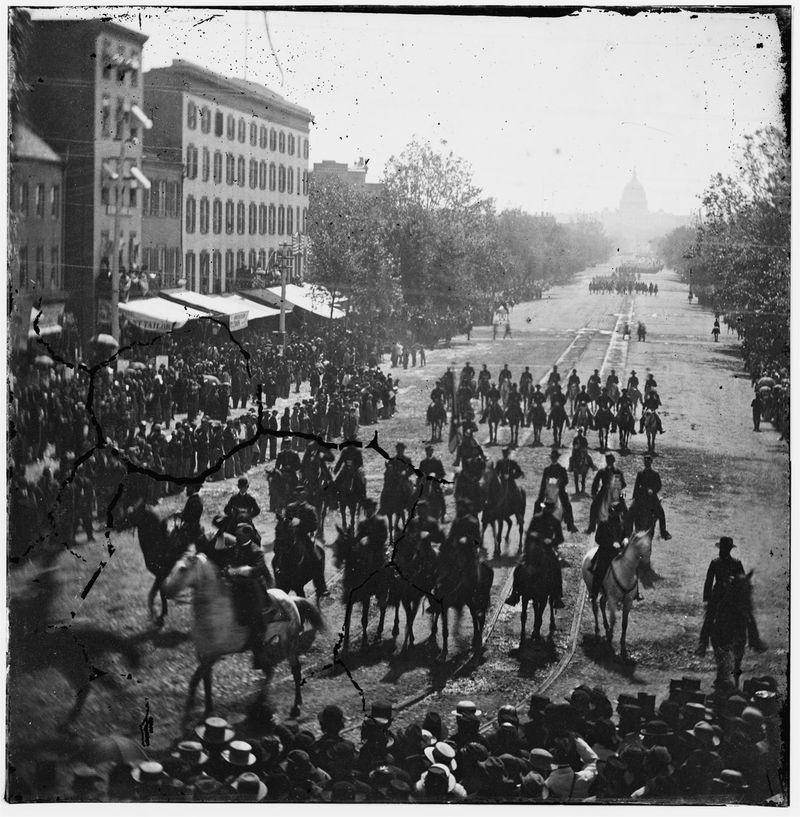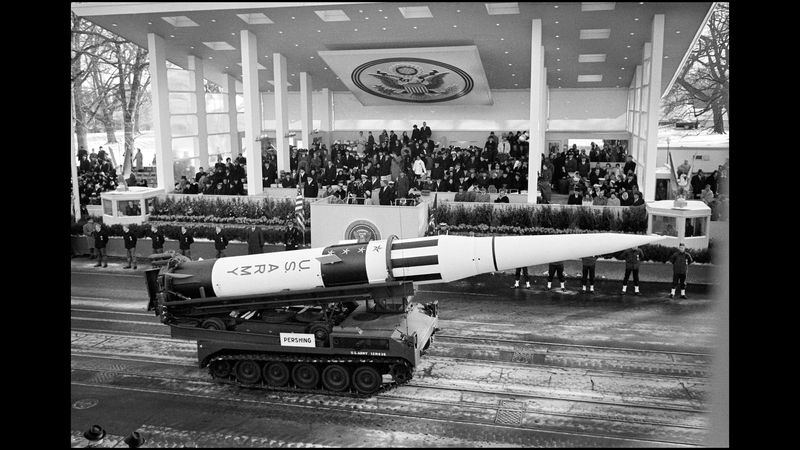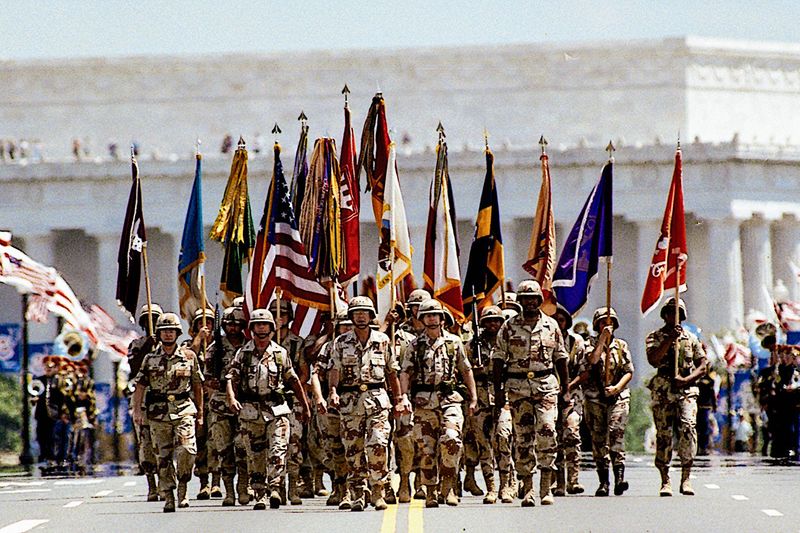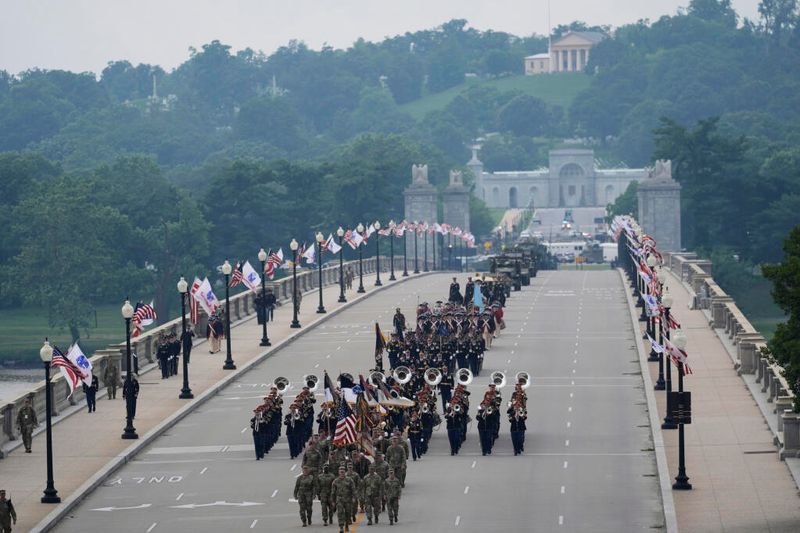Military parades have long served as powerful symbols of American unity, strength, and celebration. Throughout our nation’s history, these grand displays have marked significant moments of triumph, transition, and commemoration. From the Civil War’s conclusion to modern celebrations, these seven major military parades have not only showcased America’s military might but also reflected the changing face of our armed forces and national identity.
1. Victory March After Civil War Bloodshed – Grand Review of the Armies (1865)
Over 200,000 Union soldiers marched through Washington D.C.’s streets during the two-day Grand Review of the Armies. President Andrew Johnson and General Ulysses S. Grant watched proudly as the war-weary troops paraded down Pennsylvania Avenue.
The May 23-24 celebration marked America’s first truly national military parade. Battle-hardened veterans of Sherman’s March to the Sea and Meade’s Army of the Potomac displayed their regimental colors and hard-won pride.
Crowds cheered wildly as Black units marched alongside their white comrades, a powerful symbol of the Union’s victory over slavery. This unprecedented gathering demonstrated national resilience and unity after four brutal years of civil conflict.
2. America Rallies For Global War – New York WWII Mobilization Parade (1942)
Patriotic fervor swept through Manhattan as 30,000 troops marched down Fifth Avenue on June 13, 1942. Just six months after Pearl Harbor, this massive display aimed to bolster public morale and showcase American determination.
New Yorkers lined the streets ten-deep, waving flags and cheering as fresh-faced soldiers, sailors, and marines passed by. Many of these young men would soon face combat in Europe and the Pacific.
Mayor La Guardia declared it “At War Parade Day” as military bands played stirring marches. The event represented a crucial moment when Americans, still reeling from attack, united behind the war effort with renewed purpose and resolve.
3. Heroes Return Home Triumphant – World War II Victory Parades (1945-1946)
Confetti rained down like snowflakes as returning GIs marched through America’s cities following victory in World War II. New York’s parade on January 12, 1946, saw over 10,000 paratroopers from the famed 82nd Airborne Division stride proudly down Fifth Avenue.
Military hardware – tanks, jeeps, and artillery pieces – rolled alongside the troops. The crowds went wild at the sight of these weapons that had helped defeat fascism across two continents.
Similar celebrations erupted in Washington D.C., Chicago, and San Francisco. These parades marked America’s emergence as a global superpower while honoring the 16 million Americans who served and remembering the 405,000 who never returned.
4. General Becomes Commander-in-Chief – Eisenhower Inauguration Military Parade (1953)
January 20, 1953 marked a Cold War spectacle as President Dwight D. Eisenhower’s inauguration featured 22,000 military personnel in a massive show of American might. The former Supreme Allied Commander watched approvingly as troops, bands, and equipment processed down Pennsylvania Avenue.
Most striking was the 85-ton atomic cannon, capable of firing nuclear shells – a not-so-subtle message to the Soviet Union. Missile units, aircraft flyovers, and ceremonial salutes punctuated what newspapers called “the most elaborate inaugural parade ever held.”
Eisenhower, the military hero turned president, used this display to communicate American resolve during heightened Cold War tensions. The parade reflected a nation confident in its military prowess yet anxious about nuclear threats.
5. Cold War Muscle-Flexing – Kennedy Inauguration Military Parade (1961)
Snow blanketed Washington D.C. on January 20, 1961, as the youngest elected president in American history showcased military strength during his inaugural parade. John F. Kennedy, a WWII veteran himself, stood attentively as missiles, tanks, and artillery pieces rolled past the reviewing stand.
The display featured every branch of service in a calculated demonstration aimed at Soviet Premier Khrushchev. Newly developed weapons systems, including nuclear-capable missiles, communicated American technological superiority.
Military bands played patriotic tunes while precision drill teams executed flawless maneuvers through snowdrifts. This parade occurred at a critical Cold War juncture – just months before the Bay of Pigs invasion and Berlin Crisis would test Kennedy’s resolve against communist expansion.
6. Desert Storm Victory Celebration – National Victory Celebration (1991)
Washington erupted with patriotic pride on June 8, 1991, as America celebrated victory in Operation Desert Storm. Approximately 8,000 troops marched in precision formation while Patriot missiles – the same system that intercepted Iraqi Scuds – rolled down Constitution Avenue.
President George H.W. Bush beamed as F-117 stealth fighters and B-2 bombers roared overhead. The parade marked America’s most significant military celebration since World War II, coming after a decisive 100-hour ground campaign against Iraqi forces.
Desert camouflage uniforms and sand-colored vehicles evoked the Middle Eastern battlefield. This triumphant display helped heal lingering Vietnam War divisions and restored public confidence in American military capabilities after a swift victory with minimal U.S. casualties.
7. Quarter Millennium of Service – U.S. Army 250th Anniversary Parade (2025)
History and cutting-edge technology merged as 6,600 soldiers marched between the Pentagon and Arlington National Cemetery on June 14, 2025. The semiquincentennial celebration marked 250 years since the Continental Army’s formation in 1775.
Spectators marveled at historical reenactors in Revolutionary War uniforms marching alongside modern combat units. The parade featured 150 vehicles ranging from restored WWII Sherman tanks to futuristic autonomous weapon platforms.
Fifty aircraft, including vintage warbirds and advanced stealth drones, performed dramatic flyovers. This first major peacetime national parade since 1991 highlighted the Army’s evolution from colonial militia to global fighting force, with special recognition for Gold Star families who lost loved ones in America’s longest wars.







